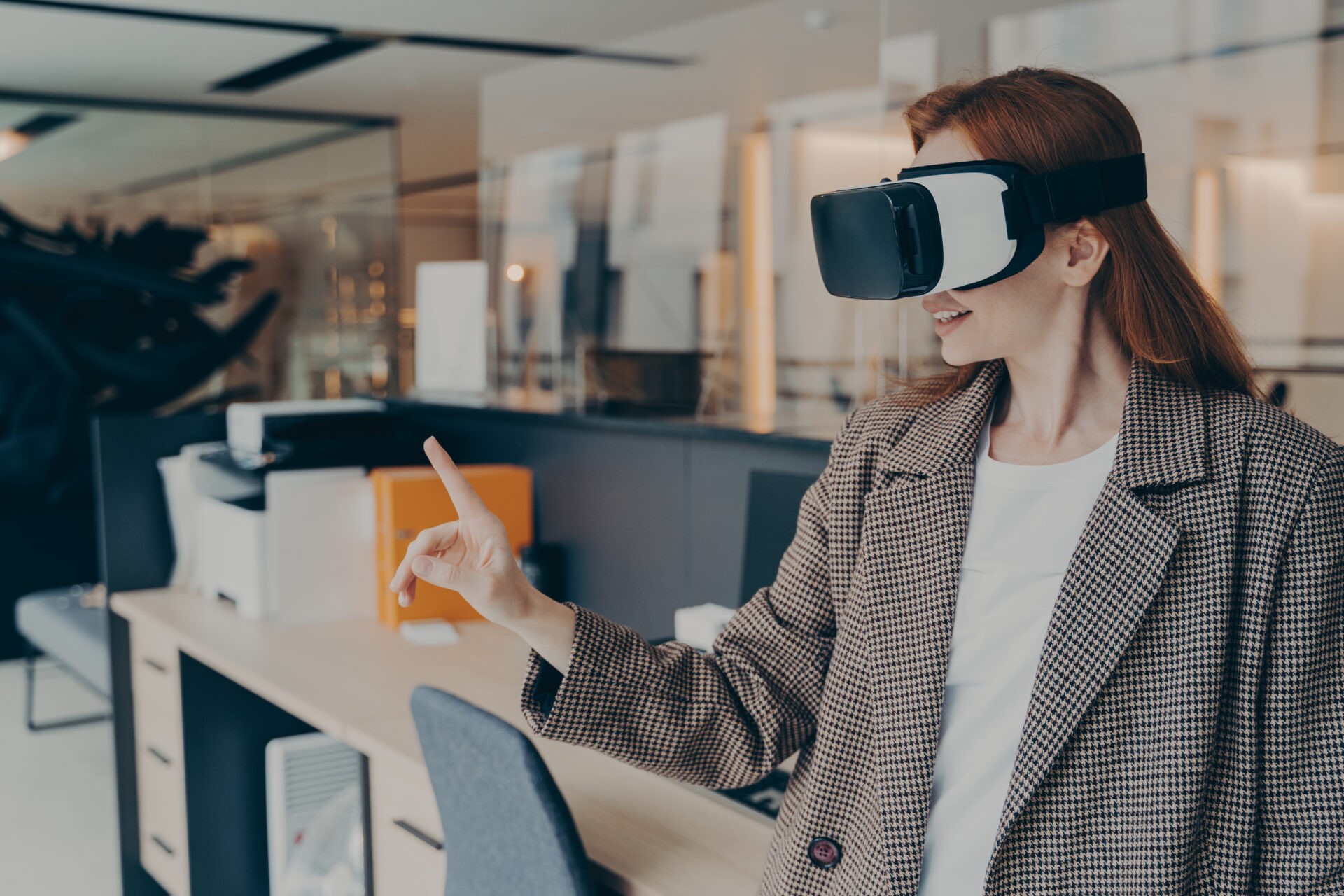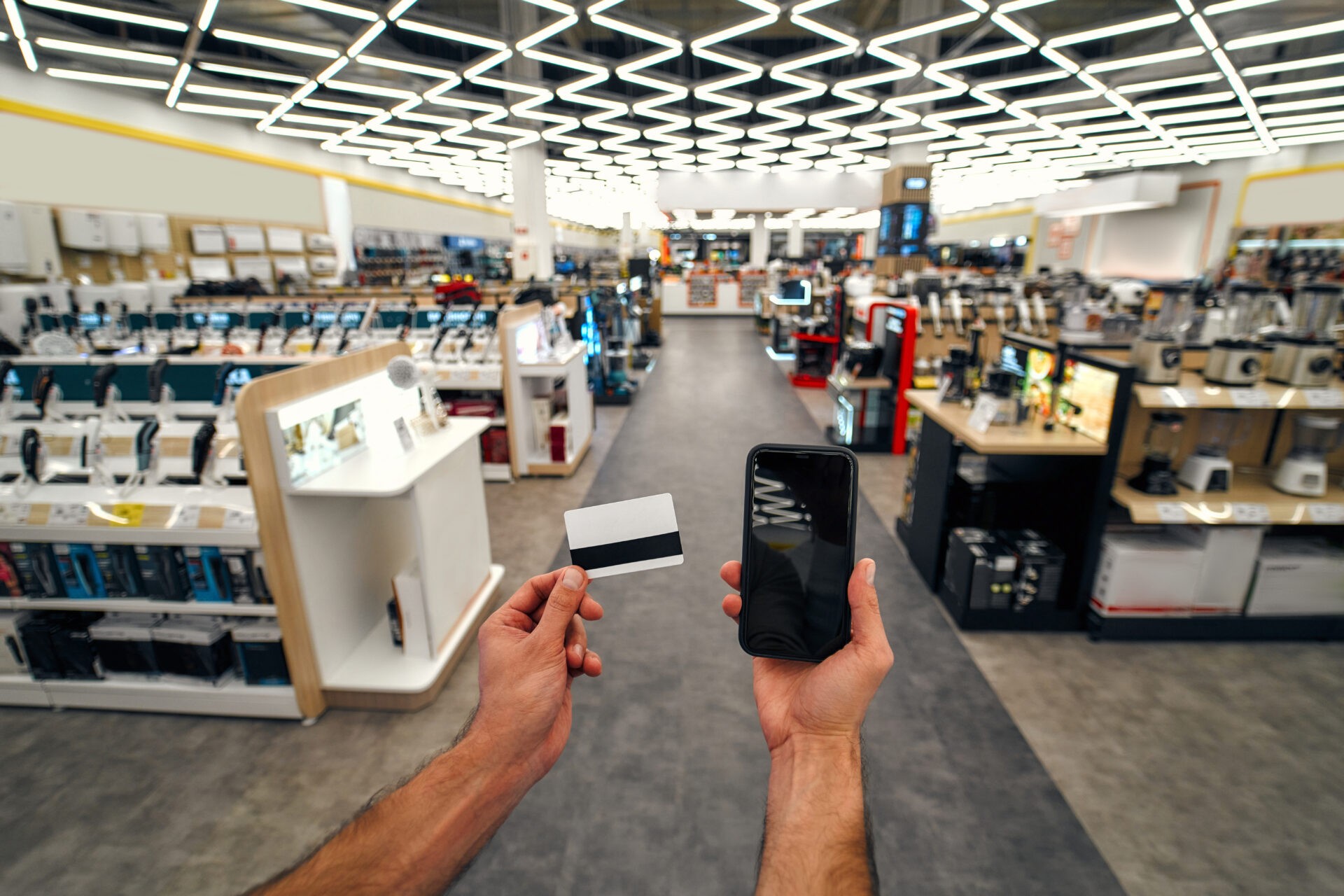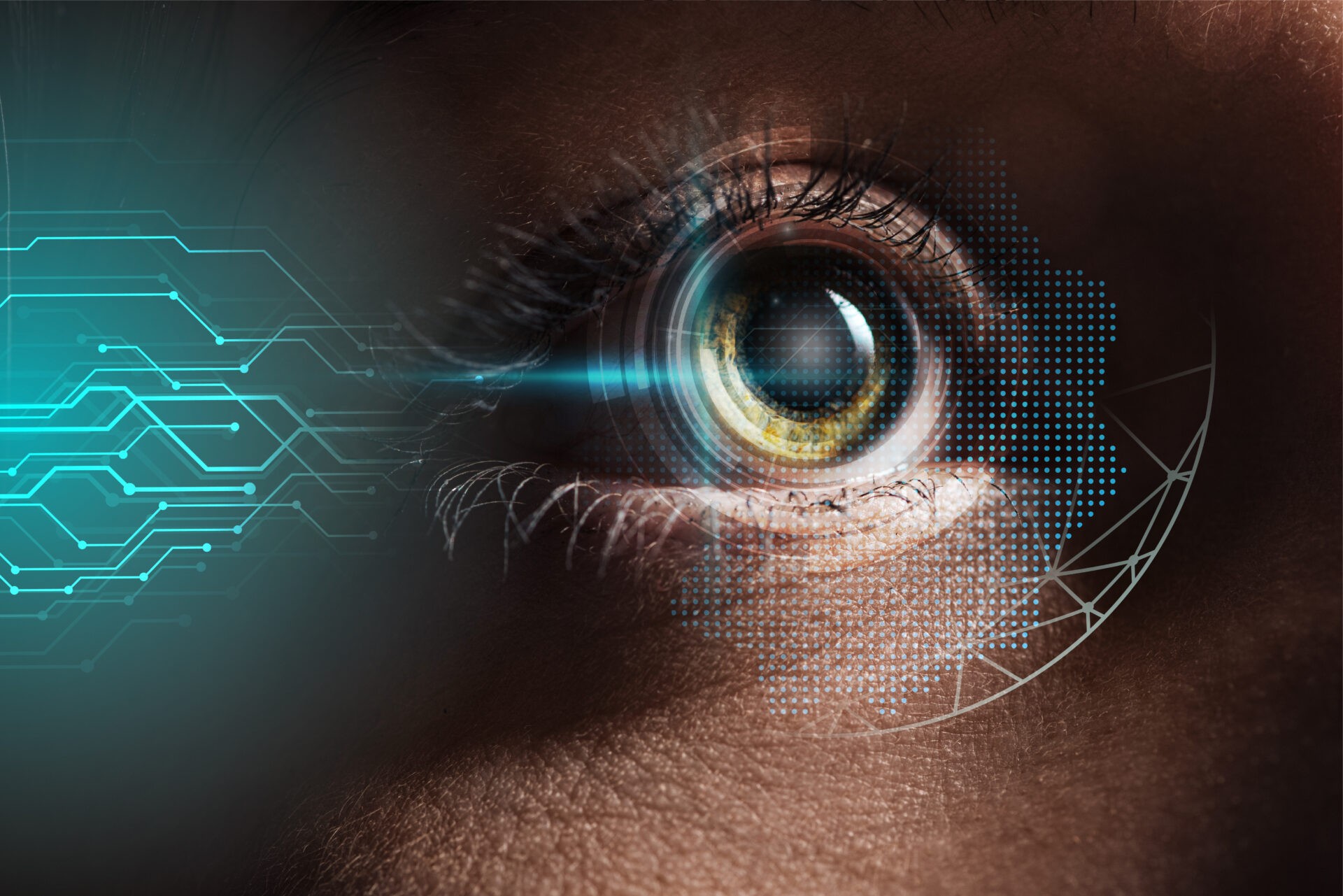Picture trying on new shoes or visualizing how a couch fits in your living room—without stepping out of your house. Augmented Reality (AR) and Virtual Reality (VR) are making this a reality, reshaping the retail landscape by seamlessly merging the physical and digital shopping experiences.
By offering immersive visualizations and interactive environments, brands are transforming customer interactions, delivering highly personalized and engaging shopping journeys.
Benefits of Augmented and Virtual Reality in Retail, eCommerce & Shopping
AR and VR are revolutionizing the retail industry, offering enhanced customer engagement, increased sales, and operational improvements. Here are the key benefits:
Enhanced Engagement & Marketing Opportunities
Augmented Reality deepens customer engagement by offering personalized, immersive shopping experiences. Brands like Nike, IKEA, and Sephora are leveraging AR to let customers visualize products in their real-world environments, leading to higher satisfaction and repeat business. Additionally, AR and VR unlock new marketing opportunities, creating shareable and memorable experiences that elevate brand recognition and drive both online and in-store traffic.
Increased Sales and Conversion Rates & Reduced Return Rates
AR and VR technologies boost sales and build customer confidence by allowing real-time product visualization. For example, brands like Nike and IKEA have seen up to a 94% increase in conversion rates because customers feel more confident in their purchasing decisions. Virtual fitting rooms and smart mirrors also reduce return rates by letting shoppers “try before they buy” virtually testing products to avoid mismatches.
Sephora’s Virtual Artist app, for instance, allows shoppers to try on makeup virtually, which further boosts confidence and reduces returns. These technologies create a seamless shopping experience that encourages informed purchasing and long-term customer satisfaction.
Improved Business Performance
Retailers leveraging AR technology see improvements in business performance, from increased online sales to better customer feedback. By reducing return rates and enhancing the shopping experience, businesses benefit from more efficient operations and reduced inventory costs.
More Sources of Income
With AR/VR, retail stores can monetize these experiences directly, offering premium features like virtual shopping assistants or exclusive AR retail experiences, providing additional revenue streams.
Statistics & Facts About AR/VR in Retail
Augmented reality is rapidly reshaping retail, changing how customers engage with brands and make purchasing decisions. Consider these eye-opening statistics:
- 61% of consumers now prefer shopping experiences that incorporate AR.
- Brands using AR-driven visualizations report a 94% increase in conversion rates.
- The AR market in retail, valued at $2 billion in 2021, is expected to surge to $61.3 billion by 2031, offering a massive opportunity for retailers to differentiate and grow.
Despite this potential, fewer than 10% of companies have fully adopted AR, creating an opening for forward-thinking retailers to gain a competitive edge.
How Can AR/VR Technologies Be Used in eCommerce and Retail?
AR and VR allow customers to visualize products in real-time, enhancing confidence and reducing returns. Brands like IKEA and Nike use AR for virtual try-ons and product visualization, merging online and offline shopping.
Choosing Products with Augmented Reality
Augmented reality technology is reshaping how customers shop by enabling them to visualize products in their own space before making a purchase.
Here’s how AR helps improve the customer experience:
- Visualize products in real-time environments: Customers can see exactly how furniture or other products will look in their own home, helping them make better purchasing decisions.
- Boosts customer confidence: AR allows customers to interact with products in a virtual setting, reducing uncertainty and improving satisfaction.
- Reduces return rates: By allowing shoppers to preview items before buying, AR helps to lower the likelihood of returns due to mismatched expectations.
- Bridges online and offline shopping: AR technology allows customers to enjoy the convenience of online shopping while still having the confidence of interacting with a product as they would in a physical store.
AR/VR Training for Employees
AR and VR technologies also improve employee training, enabling simulations of in-store scenarios like product handling, assembly, and customer service. With immersive tech, employees gain hands-on practice in a virtual setting, improving customer satisfaction and operational efficiency. Training with AR enhances staff preparedness through more engaging, real-life simulations.
360° Video
360° video allows customers to explore products or even entire retail spaces interactively from the comfort of their homes. This immersive technology is especially valuable for large items like furniture or real estate, providing a richer customer experience than traditional images. Retailers like IKEA and car dealerships have already integrated 360° videos to give customers virtual showroom tours and let them see products in action, enhancing the shopping experience.
Mind-blowing AR/VR Ideas
AR and VR are pushing the boundaries of creativity in retail. Imagine browsing through a virtual shopping mall or using AR-powered window displays that let you explore products without entering the store.
Brands can now deliver interactive product catalogs that blend the physical and digital worlds in innovative ways, allowing customers to rotate, customize, and even “try” products in real-time. These features boost engagement, make shopping more personalized, and enhance brand loyalty.
Smart Mirrors in Stores
Smart mirrors and virtual fitting rooms revolutionize the in-store experience by enabling customers to try on clothing or accessories digitally, without ever stepping into a fitting room. These tools, powered by AR, enhance customer satisfaction by offering more accurate product previews, reducing the chances of returns, and creating a smoother shopping journey for tech-savvy customers.
Interactive Instruction Manuals
AR-powered interactive instruction manuals offer step-by-step visual guidance for tasks like assembling furniture or setting up devices. Customers can overlay digital instructions directly onto the physical product, simplifying the process and minimizing errors for a smoother post-purchase experience.
Key benefits of AR interactive manuals:
- Clear, step-by-step guidance: Virtual instructions make complex assemblies easier to follow.
- Reduced frustration: Customers avoid common setup mistakes with visual aids.
- Enhanced satisfaction: Easy-to-understand instructions lower the chances of returns due to setup issues.
- Stronger brand loyalty: A seamless post-purchase experience fosters repeat business and positive customer feedback.

AR Applications in Retail
As augmented reality continues to gain traction in the retail industry, its applications are becoming more varied and sophisticated, offering new ways to engage customers and improve their AR-experience.
Visualizing Home Items
One of the most transformative uses of augmented reality in retail is its ability to help customers visualize how physical products will look in their own spaces. For instance, IKEA’s AR app allows users to place virtual furniture in their homes, giving them a realistic preview before making a purchase. This feature helps online shoppers make better-informed decisions by enabling them to see how furniture will fit and complement their space.
Augmented reality retail solutions like this not only increase customer satisfaction but also reduce the likelihood of product returns, as buyers can assess whether items are suitable for their home before purchasing. By merging the physical world with AR-retail solutions, retailers can create immersive experiences that make online shopping more convenient and reliable for customers.
Accessing Product Information
AR applications in retail are revolutionizing how customers access product information. Using their smartphones, shoppers can scan products in-store to receive detailed information, including pricing, reviews, and even product specifications. This enhanced shopping experience gives consumers immediate access to vital product data, enriching their overall experience in both physical stores and online.
Interactive shopping experiences powered by AR technology allow customers to visualize product details in 3D or see how a product functions in real-life scenarios. For example, some retailers offer AR apps that allow customers to point their phones at a product and instantly access information, such as its sustainability, user reviews, or availability in different colors and sizes. These AR experiences make the shopping process smoother and more engaging, leading to higher customer satisfaction and increased sales for retailers.
The Future of AR in Retail
Augmented reality is set to transform the retail industry, creating a seamless blend of physical and digital shopping experiences. Here’s what the future holds:
- Smart Malls and Interactive Shopping: The future of retail is rapidly evolving, with AR-powered smart malls and WebAR leading the way. These immersive environments offer enhanced shopping experiences, from real-time product navigation to live inventory updates. WebAR eliminates the need for apps, making AR more accessible and easy to integrate into everyday shopping, while smart malls bring a futuristic, tech-driven feel to physical retail spaces.
- WebAR and Mobile AR Apps: WebAR, accessible directly through web browsers, is gaining popularity for offering seamless, personalized shopping experiences without the need for app downloads. Together, these innovations are transforming how consumers shop, merging physical and digital experiences for more interactive and engaging journeys.
- Experiential Marketing Campaigns: AR and VR are revolutionizing marketing by creating memorable, interactive campaigns. Virtual try-ons, product demos, and personalized experiences are key to building deeper connections with customers. These immersive marketing strategies also boost brand recognition and customer loyalty.
As more retailers adopt AR, experiential campaigns will play a central role in attracting and retaining customers, both online and in-store.
How to Implement AR and VR in Your Retail Strategy
Implementing AR and VR technologies in retail can be transformative, but it requires careful planning and execution. Choosing the right platforms, creating engaging customer experiences, and tracking your success are key elements of a winning virtual- and augmented retail strategy.
- Choosing the Right Technology:
Start by selecting platforms that align with your business needs. AR tools like Zakeke offer virtual try-ons, while VR can provide immersive 360° video tours. Choose technology that best fits your products and customer preferences. - Building AR and VR Experiences:
Next, focus on creating personalized, immersive experiences like virtual fitting rooms or product visualizers. These will enhance customer engagement and boost sales. Ensure that the solutions you choose integrate seamlessly with your existing systems to maintain scalability and a smooth customer journey. - Measuring Success and ROI:
Tracking the success of your AR/VR initiatives is critical for optimizing your strategy. Key performance metrics include engagement rates, time spent interacting with AR features, conversion rates, and return rates. For example, some eCommerce brands have seen a 250% increase in conversions after incorporating AR into their shopping experience.Use platforms like Google Analytics or AR-specific tools like Zakeke or Blippar to gather data on customer interactions. Analyzing return rates and customer feedback will help you refine your strategy and maximize ROI.
- Work with Professionals:
Looking to captivate tech-savvy shoppers and boost your brand? Linvelo’s expert AR/VR solutions can help you deliver immersive experiences that engage customers, increase sales, and reduce returns. Contact us today to discover how we can transform your retail strategy with cutting-edge AR and VR technologies.
In Conclusion
AR and VR technologies are revolutionizing the retail industry, transforming every aspect of the shopping journey—from added virtual fitting rooms to immersive product experiences and interactive navigation aids. These innovations provide retailers with unmatched opportunities to engage customers, boost sales, and build long-lasting loyalty.
In today’s fast-paced retail environment, embracing AR and VR is essential to staying competitive. Retailers and even smaller brick and mortar stores who adopt these technologies can enhance customer satisfaction and continuously refine their approach based on performance insights.
Ready to elevate your retail experience? Linvelo specializes in custom AR and VR solutions that drive engagement, increase sales, and reduce return rates. Contact us today to discover how immersive technology can transform your brand.
Frequently Asked Questions
What is the difference between AR and VR in retail?
Augmented Reality enhances the shopping experience by overlaying digital elements onto the real world, allowing customers to interact with products in real-time. Virtual Reality, on the other hand, immerses users in a fully virtual environment, creating an entirely simulated shopping experience.
How does AR enhance customer engagement in retail?
AR enhances customer engagement by creating interactive and immersive shopping experiences. Shoppers can visualize products in real-time, try on virtual garments, or interact with 3D product models, which helps build stronger connections with brands and improves the overall shopping journey.
What benefits do virtual fitting rooms offer in retail?
Virtual fitting rooms allow customers to digitally try on clothing and accessories before making a purchase. This feature provides a more convenient and confident shopping experience, helping to reduce return rates and increase customer satisfaction by enabling more informed purchasing decisions.
How can retailers measure the success of AR and VR implementations?
Retailers can measure the success of AR and VR implementations by tracking key performance indicators such as engagement rates, time spent on AR/VR features, conversion rates, and return rates. Monitoring these metrics provides insights into the effectiveness of the technology and its impact on overall business performance.






